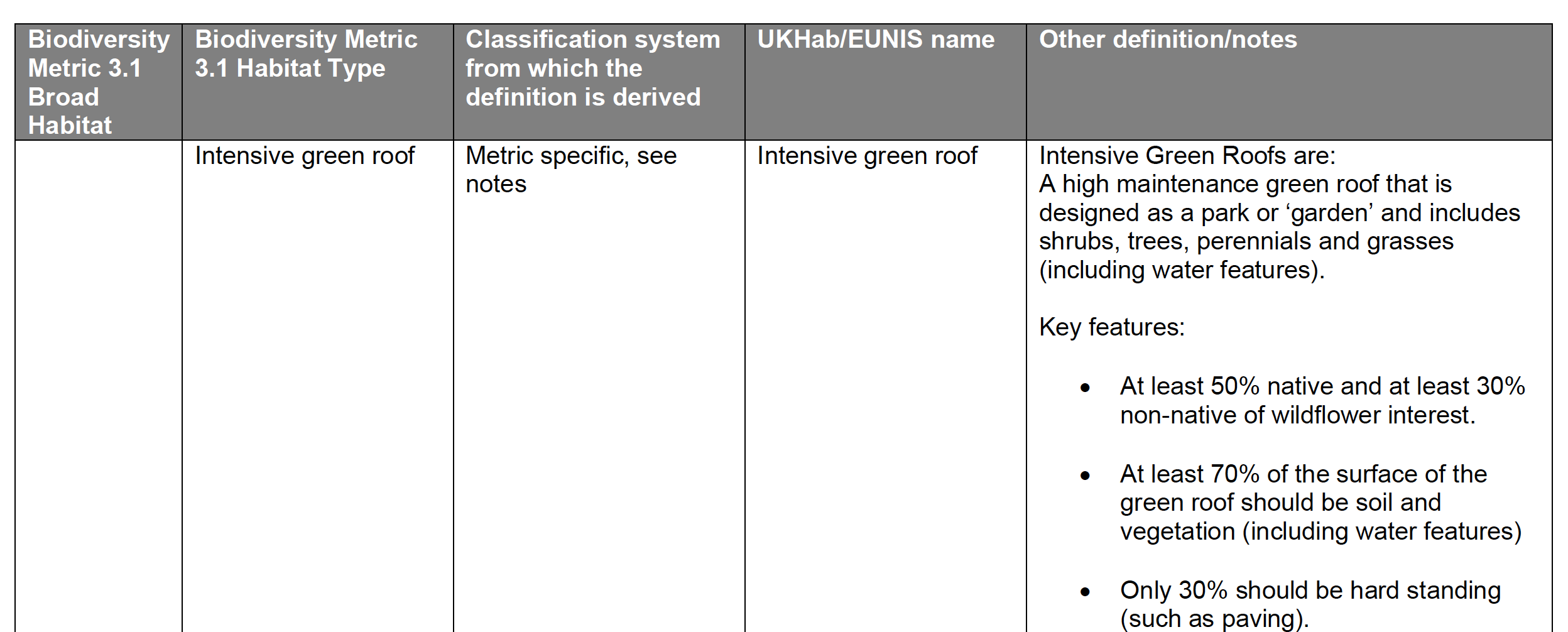Cutting Edge Policy in England Requires New Buildings To Incorporate Biodiversity
Advertisement
Biodiversity is about to get a boost in England. The recently passed Environment 2021 Bill includes a requirement for Biodiversity Net Gain (BNG). The essence of the BNG approach is that all new developments need to deliver biodiversity net gain after construction has been delivered. In addition, the net gain features need to remain in place for 30 years. In fact, they will also need to be monitored for 5 years after implementation. This will become law in 2023 but is already being actively engaged with by local authorities and the better developers.
What does this mean for green roofs?
Whilst there are concerns muted by many ecologists, especially in terms of more rural developments, when it comes to the urban realm, green roofs are going to be an important element in delivering BNG. The new policy is surely going to increase both the quantity of green roofs across England but also the quality.
Measuring biodiversity
The new policies rely on something called the biodiversity metric, which uses different types of habitat as a proxy for biodiversity, rather than a species by species approach. Future developments, large and small will need to calculate their baseline (pre-development) biodiversity units using an elaborate equation which includes the following factors:
An extensive biodiverse green roof - Bishops Gate, London. Photo: Dusty Gedge
The footprint of the project (area)
The type of habitat present, and also its condition
How common or rare the habitat is
How connected the habitat is to other similar habitat, and
Its strategic significance.
These factors are weighted and multiplied against the area of the proposed project to provide a biodiversity unit, pre-development. The same calculations are made for the post-development condition of the site, and various measures can be taken to either reduce habitat loss, restore habitat on or near the site, or support habitat restoration elsewhere. Green roof area can be used to reduce the overall size of a project footprint, therefore reducing its baseline.
For over the last 14 years the green roof market has been focussed on the UK capital (London) region where biodiversity delivery has always been a significant market driver. The success of the London Policy which grew out of work I was involved in the early 2000s on biodiversity. Yet, even in London the quality of extensive green roofs is often very poor. Use of lightweight non-compliant systems to tick the planning conditions, but do not address their intent, is still common. BNG should therefore increase the quality of the green roofs in London but also across the whole of England. Measuring biodiversity loss or gain requires evaluating the biodiversity potential of different habitats, including green roofs.
Advertisement
BNG metric for green roofs.
For Biodiverse green roofs only - expereince has shown that a range of sedums species (native, naturalised, and non-native) support wildflowers during hot periods. Therefore, for Criteria 2 a Biodiverse green roof can have non-native sedums and still achieve good condition.
For Criteria 3 - For green roof habitat types only - Buddleja davidii should be assessed alongside Schedule 9 species. This species impairs the health of the local ecosystem and reduces the biodiversity potential of the roof. It is also a sign that a roof has not been planted and seeded correctly in sub-sequent years.
Anyone who is familiar with my work over the last 25 years will recognise the BNG metric. It is based on research undertaken in Switzerland and London in late 1990s and early 2000s. I introduced the Swiss approach to London and set up research to demonstrate how it could work in the UK capital. The focus at the time was on a particular rare protected species, the Black Redstart (Phoenicurus ochruros). But BNG will be broader in its approach to delivering biodiversity. The research and the approach to delivering biodiverse extensive green roofs is reviewed and explained in more detail in this guide produced by Buglife. This is the basis of the Metric 3.1 BNG extensive green roofs. Other types of green roofs – wildflower turfs and sedum blankets are not excluded but would gain a poor score. Therefore, especially in urban areas where green roofs will be a significant contribution to BNG biodiverse green roofs are likely to be favored as opposed to poor ones.
Whilst the focus, in terms of biodiversity, is generally on extensive green roofs, intensive green roofs implicitly deliver BNG too. Therefore, there is also a BNG metric for such roofs. This is based directly, for those who know their international green roof policies on what is known as the Karlsruhe model. The focus of the Karlsruhe model was very much on wildlife delivery. Therefore, the metric for intensive green roofs focuses on native as well as non-natives of known wildlife value. Importantly it stipulates at least 70 per cent of the roof should be soil and vegetation (including water features). I have lost count of the number of so-called ‘intensive’ green roofs with far more than 30 per cent hard standing! See the tables on the right.
Advertisement
A Linnet, whose populations have plummeted in the UK, spotted on a green roof in London. Photo Dusty Gedge
From Black redstarts to Linnets – from sedums to native wildflowers
As mentioned above, the original focus for green roofs in London (and elsewhere in the UK) was on the Black redstart. Yet BNG is about far more than one rare species such as this bird. It is about the overall biodiversity – the habitat. BNG addresses broader concerns about biodiversity loss.
In a green roof context, I shall draw attention to another species, the Linnet (Carduelis cannabina). Once a common farmland bird, in my lifetime, its population across the UK has plummeted. The Linnet is associated with weedy fields and dry grasslands. In London, it was relatively common on post-industrial landscapes in the 80s and 90s but as these were built on it could have been lost in the capital. Yet it is thriving. And this is surely due to the provision of green roofs on new developments on these post-industrial plots? And where there are Linnets there are the wildflowers that they feed on. I have witnessed this myself over the last few years and will have an in depth story to tell about them soon.
Certainly in the UK and Northern Europe, if we deliver green roofs for Linnets using the BNG metric, we deliver for a broad range of flora and fauna that has been lost in the wider countryside. And we are delivering this in cities which I would contend also makes cities better for people.
Black Redstart - the bird that helped establish green roof policy in London. Photo: Dusty Gedge
BNG is a quality game not just a quantity gain
In many jurisdictions across the globe where green roofs are actively being used, there is all too often just a focus on stormwater. In my view stormwater is a numbers game – the quantity of water stored and rate of run-off. This attention (which is important) can draw focus away from the reason why most people want green roofs - for the plants that grow on them.
BNG is a positive contribution to the future of green roofs but is also returning us back to where they originated.The BNG policy in England will, I have no doubt, bring us back to the original German approach to green roofs – nature roofs. Back in the late 70s and early 80s wildflowers were common on green roofs. And in doing so the green roof industry can make a meaningful contribution to the biodiversity crisis. That means delivering local/regional flora and fauna on roofs wherever they are installed.
And that can only be a good thing!
Advertisement
Dusty Gedge, the current president of the European Federation of Green Roof and Wall Associations, is an activist turned biodiversity and green roof professional. Over the coming year he will be posting a series of videos on green roofs and biodiversity net gain. These will feature on his personal website and livingroofs.org and his YouTube channel.









